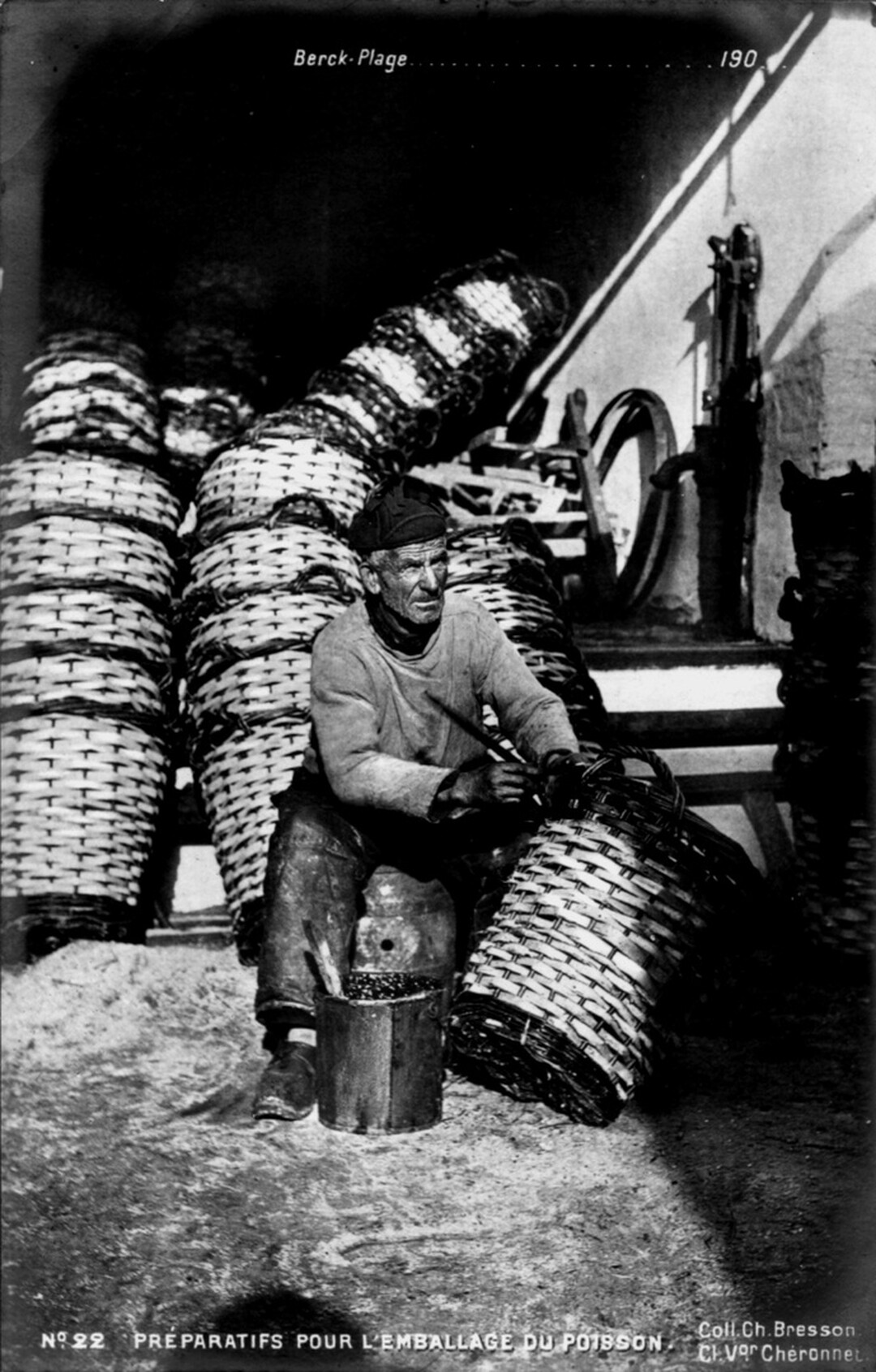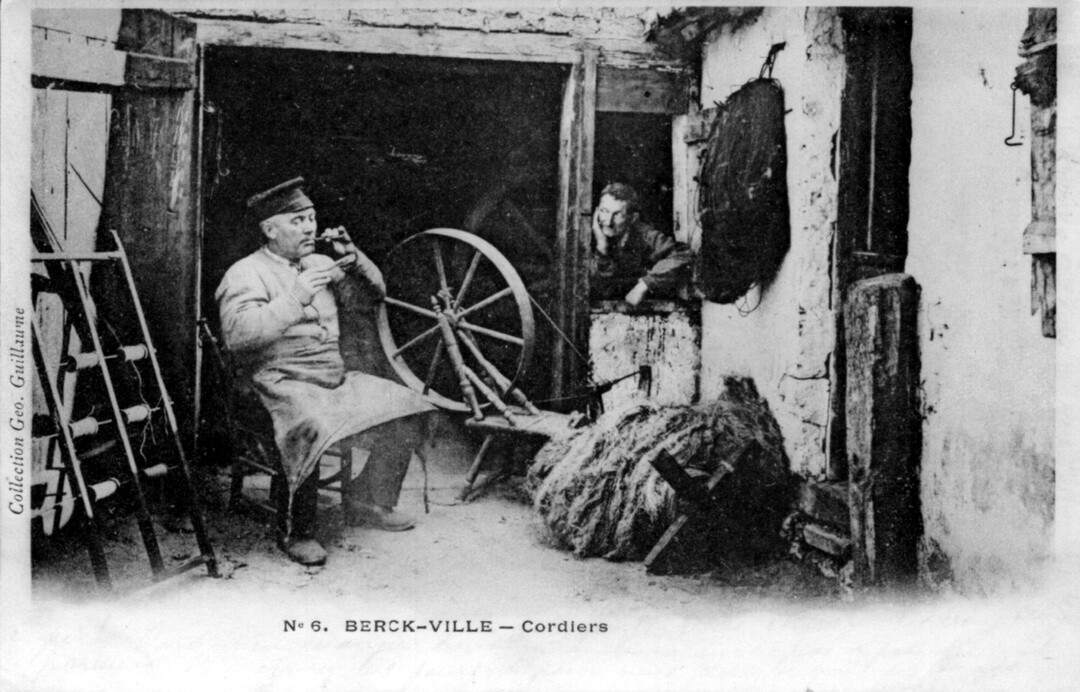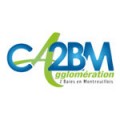The rope makers and basket makers are not well known today, but they are very present in Berck. Before the First World War, Berck had eight rope factories working for the whole territory, as far as Boulogne-sur-Mer. Three of them were large and could employ up to fifteen workers. Located on the outskirts of the town, the rope factories were set up on narrow (4 to 5 metres) but very long (up to 200 metres) sites. The last rope factory ceased its activity in 1966.
The bone groves of the Authie valley provide the raw material for the basket makers. These Berck craftsmen did not work exclusively for the navy. A dozen or so basket makers were counted at the beginning of the 20th century, which had its golden age at the turn of the 1870s.

Postcard, Preparing to pack fish, coll. Archives municipales, Berck
Once the fish had been landed, the fishmongers transported them in large wicker baskets. In 1887, the first fish boxes appeared, and the baskets were only used by women merchants "on foot", known as "cache-à-dos". In 1931, this trade disappeared.

Francis Tattegrain, Boarding, ca. 1905, coll. Musée Opale Sud, Berck










